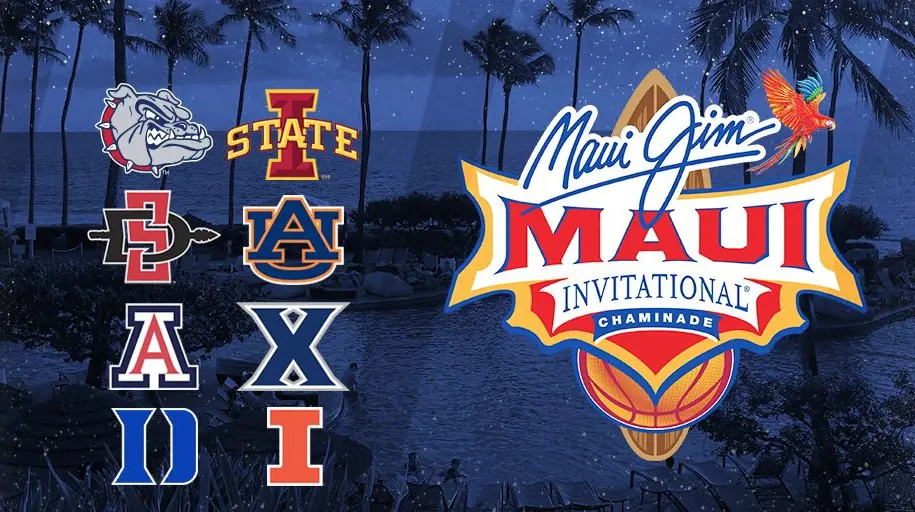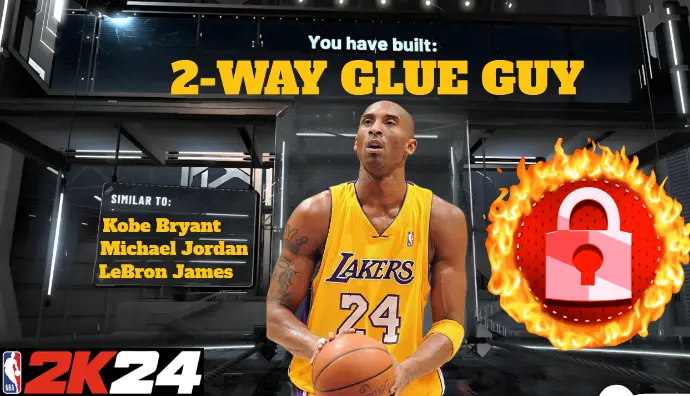Average Height In NBA From 1946 To 2023 - The average height in NBA for an American basketball player is 6 feet 6.74 inches for 2023.
NBA was formed as the Basketball Association of America in 1946 later becoming NBA in 1949 after merging with National Basketball League. Ever since the establishment of the NBA, they have recorded a considerable rise in the players' length and size.
With its 76 years of history, NBA has shown reports that the average height of a basketball player has increased by a notable margin.
An average American man is only 5 feet 7 inches. While height is an essential characteristic on the court, it is not the only requirement since skills and hard work are equally important.
Likewise, impressive maneuvering, high jumping, and strategic thinking are a few elements that take priority during the draft. Many players with short stature have done wonders beyond expectations and given hope to others like them.
The NBA has seen incredible outcomes from unexpected players who made it big with dedication, hard work, and talent. The best example to prove that would be Calvin Murphy, the shortest player ever to have his name inducted into the basketball hall of fame as a 5 feet 9 inches guard.
Average NBA Height Based On Year And Position
NBA records state that the average height has increased by 4.59 inches in the past 76 years. From 6 feet 2.13 inches in 1946 it rose up to 6 feet 6.74 inches in 2023.
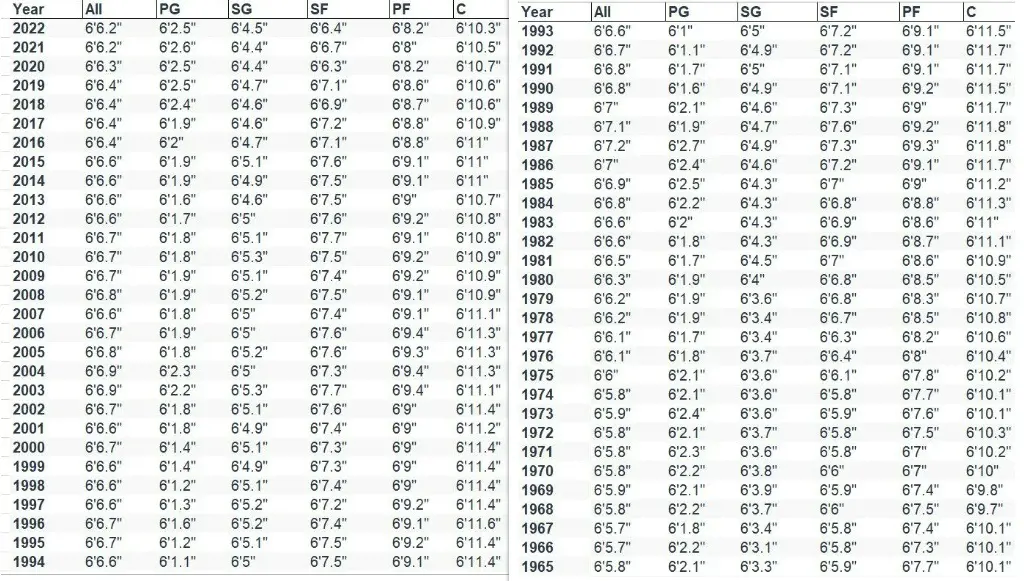

Basketball is a team sport with five players managing different positions on the court. They are Point Guard, Shooting Guard, Power Forward, Small Forward, and Center.
With reports from RunRepeat, the following explanation will highlight the changes in average height for each position during each decade, starting with the late 1940s.
Average NBA Height From 1946-1950
NBA recorded an average of 6 feet 2.13 inches during its first year of operation in 1946. In 1950, the value increased by 1.52 inches, reaching 6 feet 3.64 inches.
The starting value was the lowest in the past 76 years from the day NBA was formed.
George Mikan from the Los Angeles Lakers was the tallest player of that time, standing at 6 feet 10 inches. Mikan was a five-time All-NBA selection and was later inducted into the hall of fame.
Similarly, the shortest player was Mel Hirsch from the Boston Celtics, with a height of 5 feet 6 inches. Mel played 13 games for the Celtics during his one-year career in NBA until 1947.
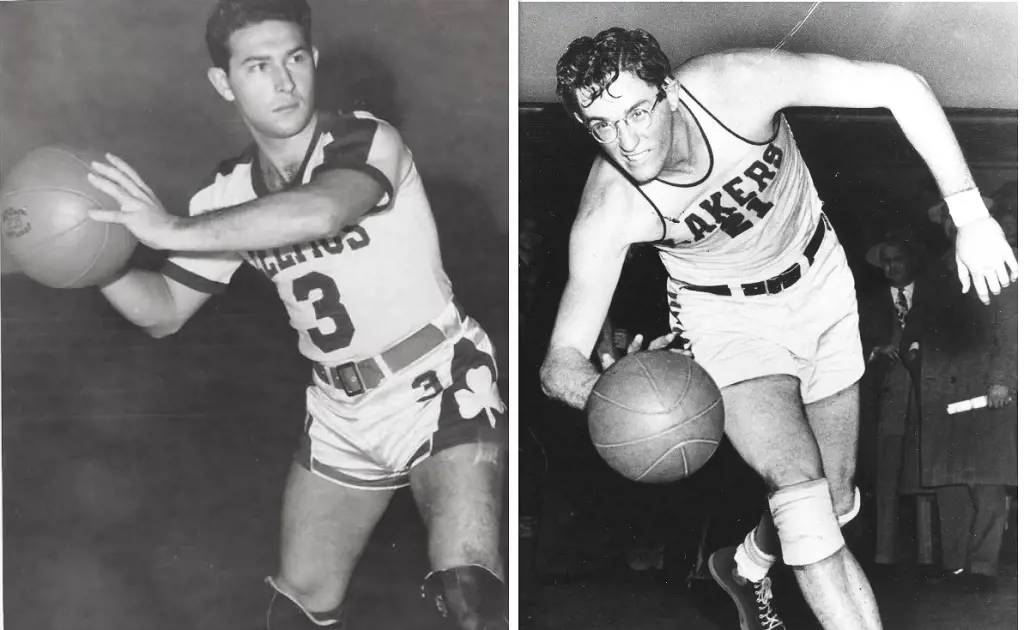
NBA height based on the player's position during the forties is discussed below.
Point Guard
An average Point Guard was 6 feet 1.1 inches during the first season of the NBA in 1947. They have always been the position suitable for short players.
Players like Bob Davies, Ernie Calverly, and Red Holzman were some of the best point guards from the forties, even though they had comparatively lower heights.
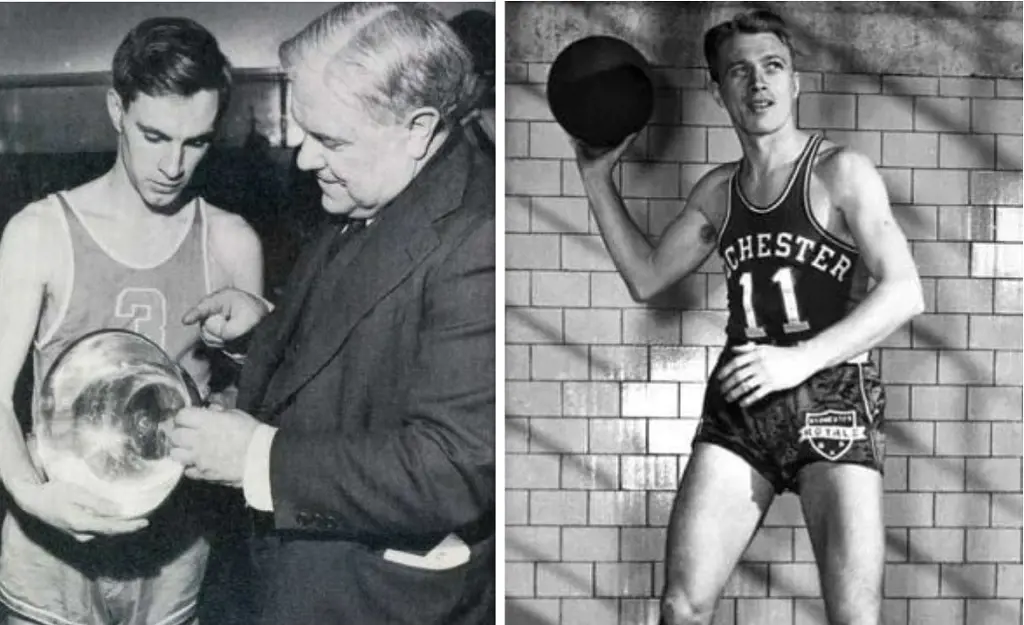
Bob was 6 feet 1 inch tall, while Ernie and Red were 5 feet 10 inches tall. Compared to recent years, the tallest players of that era were always prioritized in the center.
Shooting Guard
Shooting guard players during the forties had an average height of 6 feet 1.13 inches. Bob McDermott was among the best players in the forties, including Al Cervi and Max Zaslofsky.

The 5 feet 11 inches tall Al was the strongest backcourt player until the 1950s and even got the nickname the "Digger." Likewise, Zaslofsky was among the tallest players at 6 feet 2 inches.
Power Forward
The position of Power Forward requires tackling and maneuvering of the ball while having good dribbling skills. With an average of 6 feet 6 inches, they only fall behind the centers on the court.
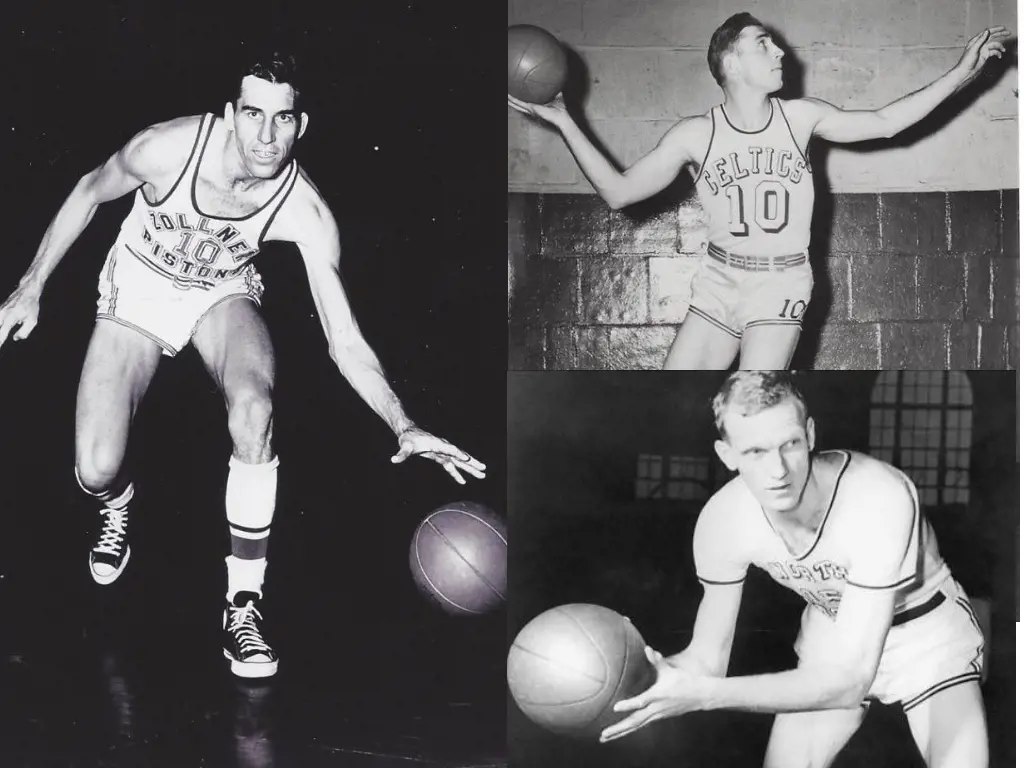
Bone Mickinney was the tallest power forward during the forties standing at 6 feet 6 inches. Other players such as Gene Englund, Bob Carpenter, and Joe Fulks were 6 feet 5 inches legends that shone in those years.
Small Forward
Small Forwards had always had an average suitable height for all positions. The average in the forties was around 6 feet 3 inches, making it convenient for other roles.
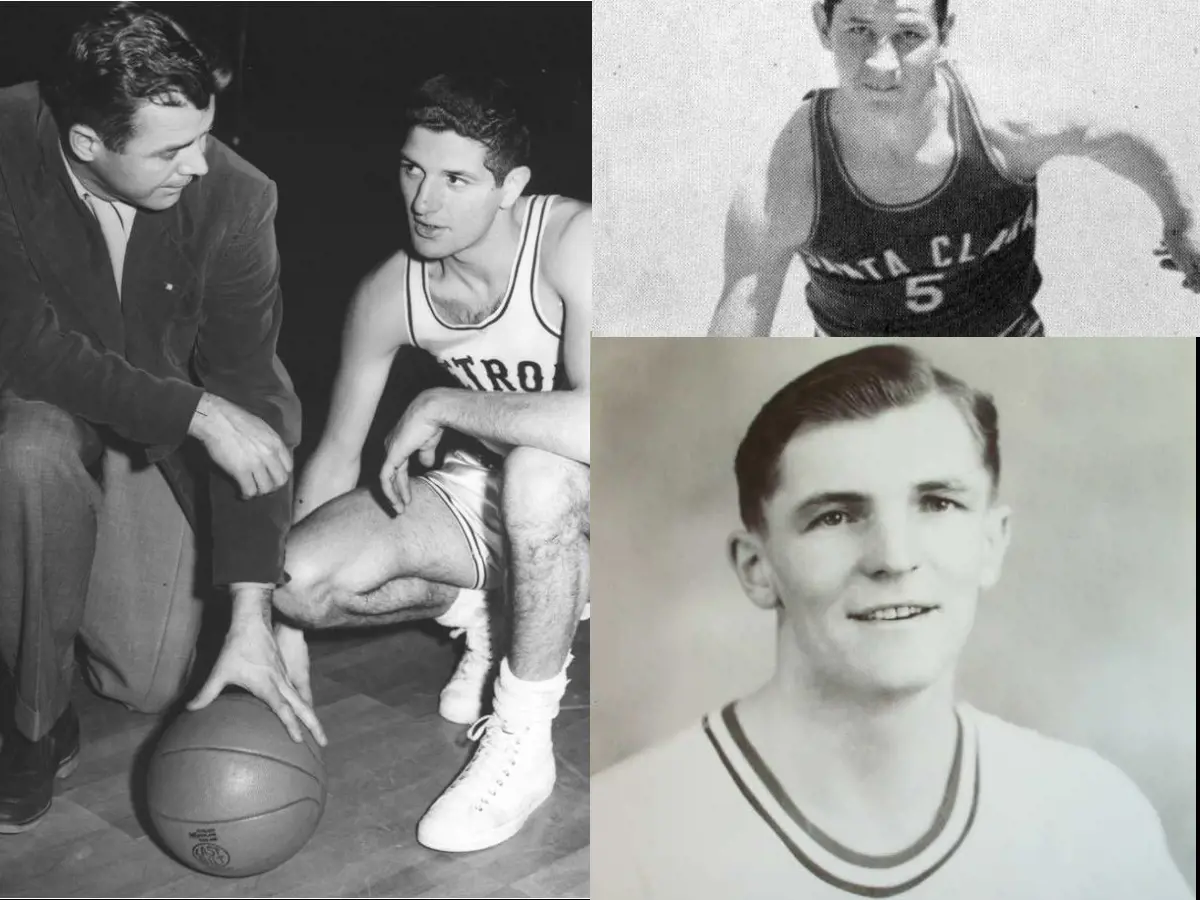
Bob Freerick, Johnny Norlander, and Robert Calihan were some of the best players from the 1940s, with a height of 6 feet 3 inches. Others like Freddie B. Lewis and Stan Patrick are famous from that time.
Center
A center tackles the rebounds and defends while trying to score from under the basket. NBA records the highest average height of Center at 6 feet 8.5 inches in the forties.

Among the tallest are legends such as George Mikan and Don Otten standing at 6 foot 10 inches. Meanwhile, players like Ed Sadowski and Arnie Risen are in the top 5 list of that time.
Average NBA Height From 1951-1960
The Fifties records show that average NBA height increased by 1.52 inches during the decade. With the lowest being 6 feet 3.72 inches in 1953, it peaked at 6 feet 5.24 in 1958.
6 feet 10 inches tall, Bill Russel started playing in the late fifties, being tied with George Mikan for the tallest player of the decade. Bleacher Reports has included them along with Neil Johnston and Ed Macauley as the best players of the 1950s.
Similarly, Ralph O'Brien is a 5 feet 9 inches Point Guard from Indiana Olympians who played 119 games in two NBA seasons until 1953. Ralph is counted among the shortest players in NBA History by Yard Barker.
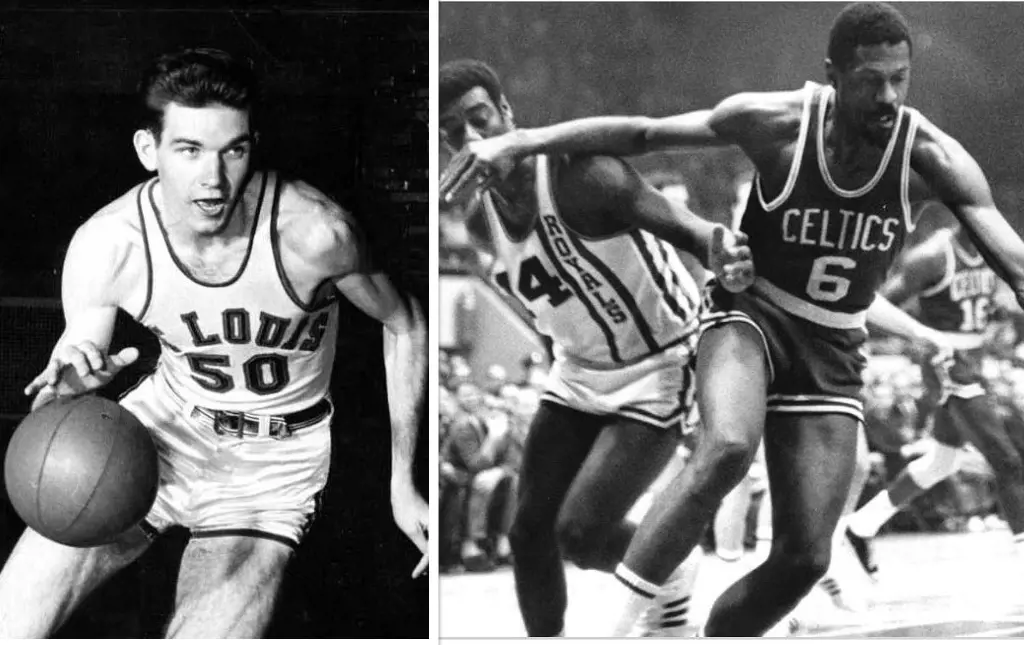
Basketball players have varying sizes based on their playing position. Their data based on five different positions during the fifties are given below.
Point Guard
The NBA had a rise in point guard player's length up to 6 feet 2 inches in 1958. On average, the decade had an increase of two inches from early 1950. .
Ralph O'Brien was a 5 feet 9 guard popularly listed among the shortest NBA player from the 50s. Additionally, Bob Cousy, Bill Davies and Jack George are some of the top players in this position during this decade.
Cousy had a 6 feet 1-inch build, while Jack George was taller with 6 feet 2-inch body.
Shooting Guard
NBA shooting guard average height was the highest in 1960, being 6 feet 3.1 inches. The lowest was in 1952, with 1.8 inches gap from the tallest.
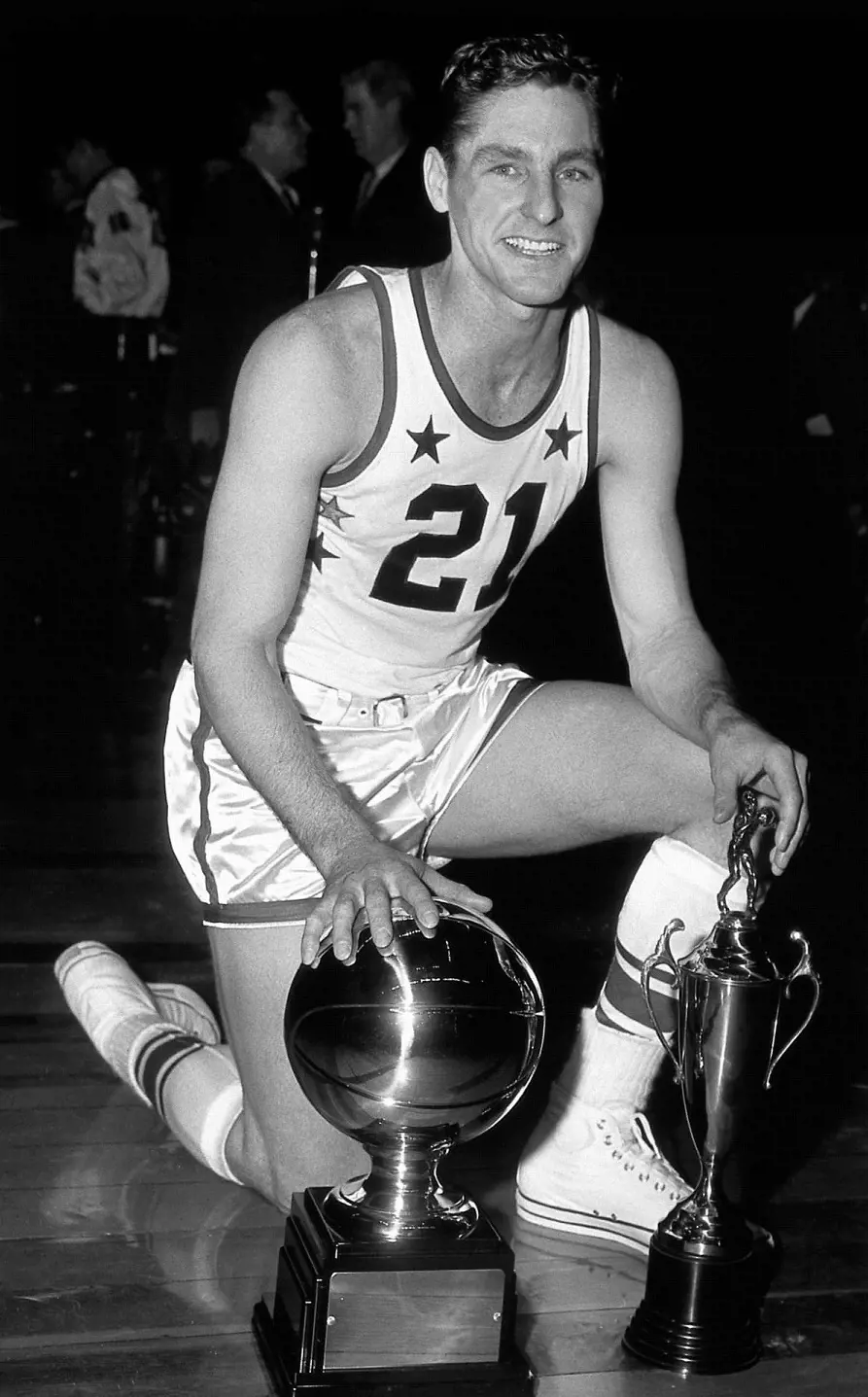
When talking about shooting guard, the 6 feet 2 inches tall Bill Sharman is the tallest and known as the best player. Sharman is stated as best player along with Neil Johnston and Harry Gallatin among the best players of the decade.
The former four-time NBA champion Neil was 6 feet 8 inches tall and he has participated in 8 all-star NBA games.
Small Forward
A Small forward from the 1950s is mostly taller than 6 feet 3.8 inches since it has only grown. The average was 6 feet 5.20 inches in 1959 while it was 1.4 inches taller than the 1951 average.
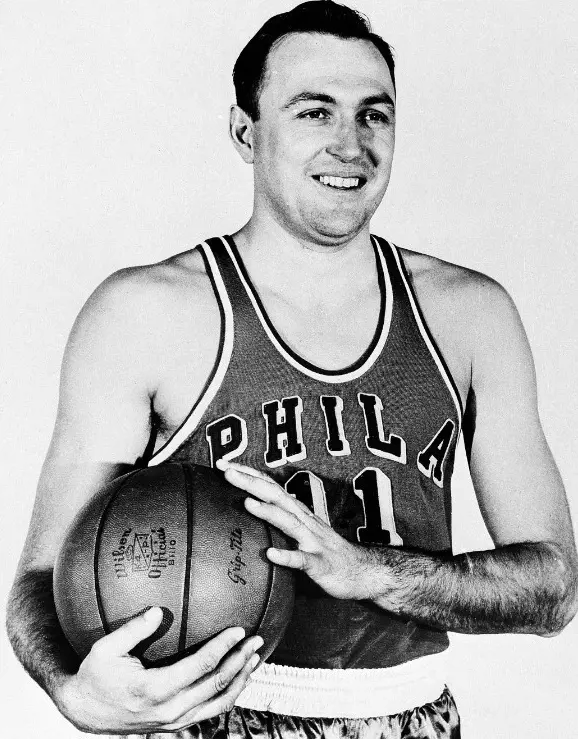
6 feet 4 inches Paul Arizin is ranked 6th over the decade among small forwarders. Following that, George Yardley is a 6 feet 5 inches tall player ranked 10th and Fred Schaus ranks 24th during the fifties.
Power Forward
NBA Power forward players have increased the height index by 1.4 inches from 1950-1960. With the highest being 6 feet 7.5 inches in 1958, the lowest average was 6 feet 6.1 inches in 1952.
Players such as Dolph Schayes, Harry Gallatin, and Vern Mikkelsen are among the top 10 players from the fifties. Dolph is 6 feet 8 inches while Harry is 6 feet 6 inches and Vern is 6 feet 5 inches.
Center
The Center player was always the tallest in every decade since the NBA was established. The average has barely changed in the fifties it was lower by 0.1 inch during the last year of the decade.
Although there were fluctuations in these ten years, the highest was 6 feet 9.1 inches in 1959, and the lowest of 6 feet 8.5 inches in 1952.
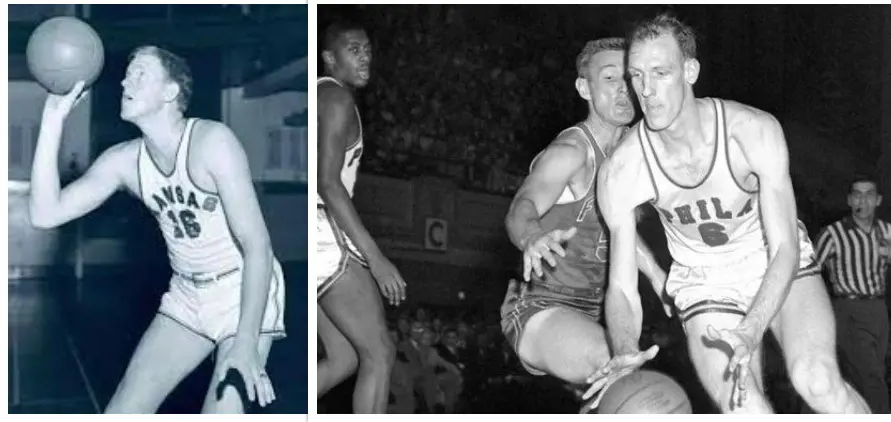
Some notable Center players of this decade are Neil Johnston, Ed Macauley, and Clyde Lovellette. Neil was a 6 feet 8 inches player known as the reigning best in the fifties with six all-star games and winner of three titles.
Meanwhile, Ed was the same height as Neil and ranked 7th among the Centers of the decade. Clyde was one inch taller than them and ranked 8th.
Average NBA Height From 1961-1970
In the sixties, players above 7 feet started to play in NBA. The average height fluctuated between 6 feet 5.12 inches in 1962 to 6 feet 5.71 inches in 1967.
With the presence of the first 7-footer player Swede Halbrook in the NBA. With a height of 7 feet 3 inches, he was recorded in history as he played center for the Syracuse Nationals from 1960-1962.
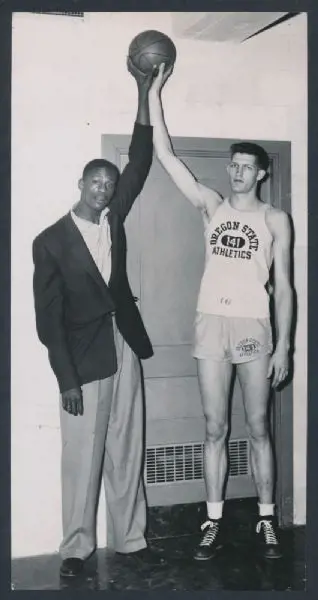
Although he only played two seasons in NBA, he remained the tallest player in history until Mark Eaton and Chuck Nevitt were drafted in 1982.
Similarly, the 5 feet 8 player Willie Somerset was the shortest in the sixties according to the NBA records in Wikipedia. Based on player position, the following details will highlight some of the significant players of the sixties.
Point Guard
NBA had witnessed the glory of 6 feet 3 inch Point guard Jerry West since the start of the 60s. Jerry was drafted in 1960 by the Lakers as a second pick in the first round.
While the average Point guard height in 1960-1970 was around 6 feet 1.3 to 6 feet 1.9, many top guards from this decade are taller than 6 feet 3 inches.
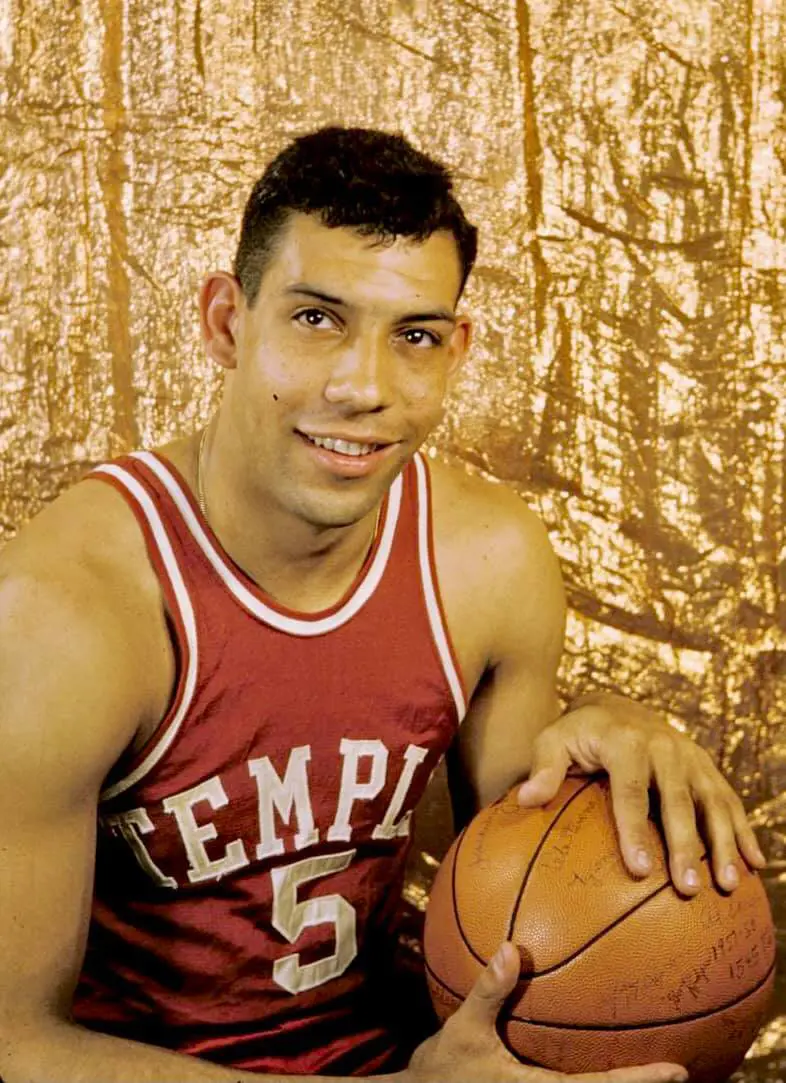
Guy Rodgers also shone since the early sixties with his towering figure of 6 feet 5 inches, receiving the title of best playmaker in the mid-60s.
In addition, Lenny Wilkins, the former point guard turned one of the greatest coaches in NBA history, also began his career in the sixties.
Shooting Guard
Shooting guards are mostly taller than point guards, which makes them suitable candidates to play in different positions. In the sixties, NBA had an average variation in their height by 0.5 inches.
The highest average was 6 feet 3.1 inches in 1960, while the lowest was 6 feet 3.6 inches in 1967. Sam Jones and Richie Guerin are stars of this decade, standing tall at 6 feet 4 inches.
Additionally, 6 feet 5 inches player Oscar Robertson debuted in the sixties.
Power Forward
NBA registered an average height of 6 feet 7.7 inches in 1965, 2.5 inches higher than in 1947. With the influx of tall and talented players, the average is increasing every decade.

6 feet 8 inches player Jerry Lucas began his NBA career with the Cincinnati Royals in 1963. Jerry was a seven times All-Star Power forwarder.
Bob Petitt is another legendary player in this position who ranked top five in this decade. The 6 feet 9-inch player made it to the All-NBA team ten times and was an All-Star for eleven seasons in his career.
Small Forward
NBA Small Forward players had a maximum average height of 6 feet 6 inches in 1966. It was 0.9 inches higher than the lowest average of 6 feet 5.1 inches in 1960.
Players in this position have a moderate height which is ideal for any situation compared to others. Chet Walker from the Syracuse Nationals was a 6 feet 8 inches tall player who made it to the NBA All-Star 7 times in his career.
Similarly, the 6 feet 5 inches player Eglin Baylor from Los Angeles Lakers was shorter than other small forwards. However, he dominated every game in the decade and continuously made it to the All-Star team for many years, except for 1966.
Center
NBA had an increase in the height of center players by one inch on average during the sixties. It rose from 6 feet 9 inches in 1960 to 6 feet 10 inches in 1970.
With the enrollment of 7 footers in the decade, the rise in average is not surprising. NBA had noticed the glory of the first ever 7 feet 3 inches tall player Swede Halbrook in 1961. Swede was a key player for Syracuse in 79 games during the first season, and his presence was a deterrent for other teams.

Another 7 feet 1 inch Center Wilt Chamberlain had made many records in his career. While he played with Philadelphia Warriors in the early 60s, he moved to the 76ers in 1965 and became an NBA Champion in 1967.
Compared to Swede Halbrook, Wilt was more popular because of his numerous achievements in the NBA. Wilt is the only player to score 100 points in a single game throughout history.
Average NBA Height From 1971-1980
NBA recorded an average height of 6 feet 6.33 inches in 1980, starting from 6 feet 5.68 in 1970. This was also the decade when the two most influential basketball leagues ABA and NBA merged in 1975.
The Seventies witnessed 7 feet 2-inch players like Kareem Abdul-Jabbar stand above the competition, becoming the NBA MVP for six seasons in this decade. Artis Gilmore from the Chicago Bulls had the same height, but his name was more prevalent in ABA.
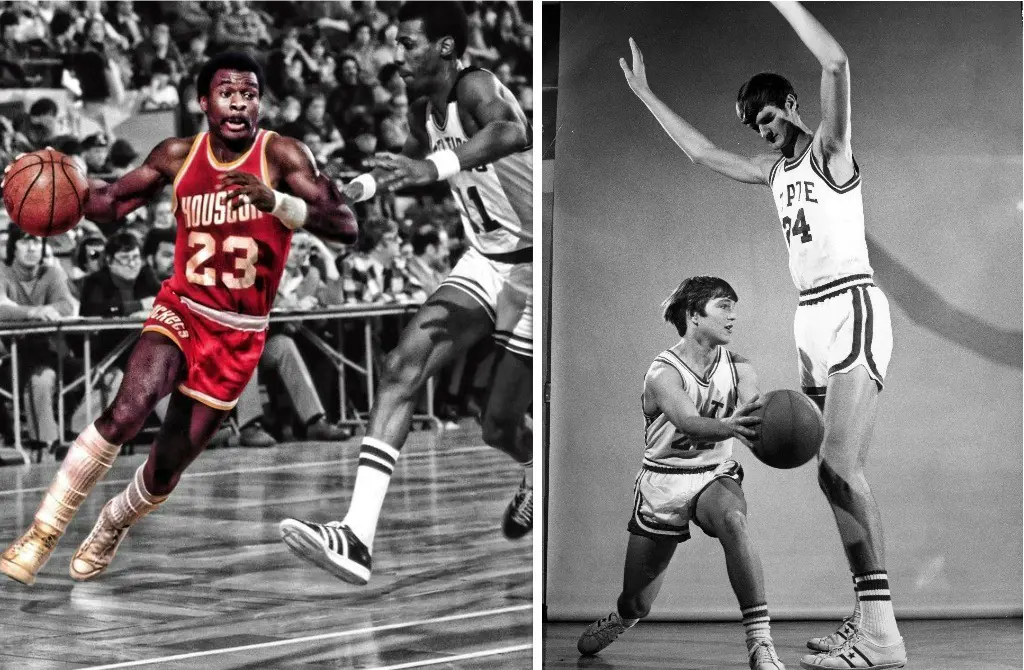
Monte Towe from Denver Nuggets was the smallest in this decade, with a height of 5 feet 7 inches. Meanwhile, Calvin Murphy, who was 5 feet 9 inches tall, became more popular in NBA.
Murphy won the J. Walter Kennedy Citizenship Award from NBA in 1979 for providing outstanding service and dedication to the community.
With players of every length becoming iconic figures in the 70s, the average height for each position is discussed below.
Point Guard
The average point guard height has increased by 0.5 inches in this decade. With the lowest being 6 feet 1.4 inches in 1971, it rose to 6 feet 1.9 inches by 1980.
Legendary Point Guard Walt Frazier was 6 feet 4 inches tall and had many accolades in the starting decade of his career. The two-time NBA Champion was an NBA All-Star seven times, while he also made it to the All-NBA team four times in the seventies.

Players such as Nate "Tiny" Archibald is also famous for his quick reactions and shiftiness which made it hard to defend against him.
All-Star player Calvin Murphy also became famous in the seventies with numerous accomplishments despite being the shortest among his peers.
Calvin is also the shortest-ever NBA player to be inducted into the Naismith Memorial Basketball Hall of Fame.
Shooting Guard
NBA shooting guards had an average height of 6 feet 3.9 inches in 1979. Starting with 6 feet 3.4 inches, there was a rise of 0.5 inches in this position during the seventies.
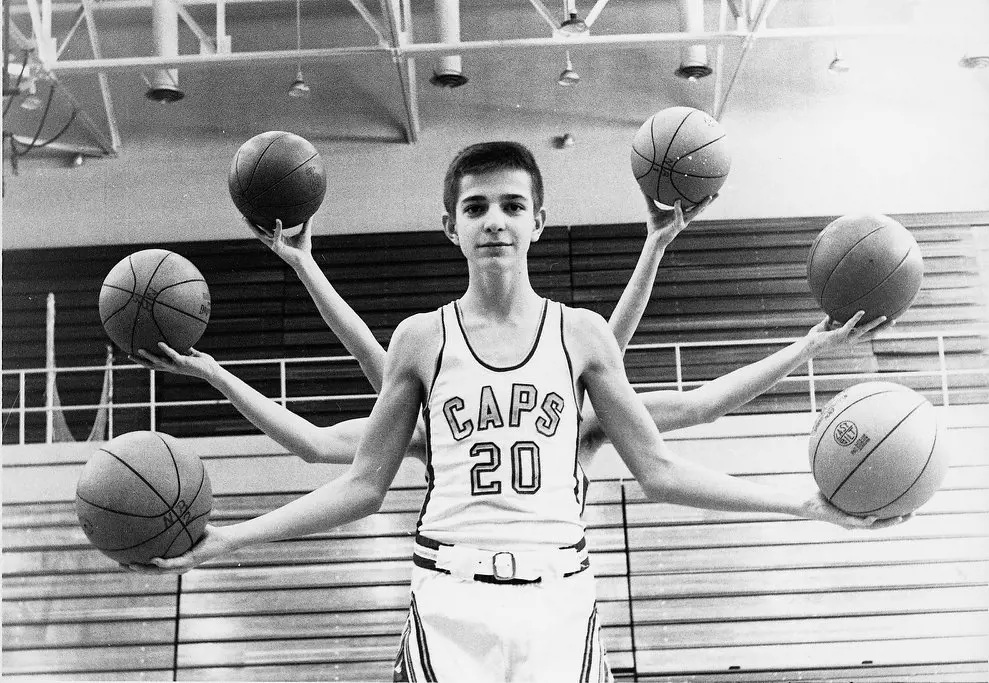
Pete Mavarich from Atlanta Hawks is among the tallest guard in this position at 6 feet 5 inches. Pete is a five-time NBA All-Star and an NBA scoring champion in 1977.
On the other hand, NBA Champion Gail Goodrich was only 6 feet 1 inch tall and became an NBA All-Star five times this decade. Another renowned figure would be Dave Bing who had a remarkable playing career for 12 years before retiring in 1978. Dave became the Mayor of Detroit in 2009.
Power Forward
The average power forward height gradually increased by 1.1 inches from 1970-1980. NBA recorded an average of 6 feet 7.5 in 1970 while it rose to 6 feet 8.6 inches in 1980.
Elvin Hayes is the top player in this position standing tall at 6 feet 9 inches, as reported by Ranker. Similarly, taller than him by one inch, Moses Malone started his NBA career in 1975. Moses was 6 feet 10 inches and became the NBA MVP in 1979.
Most of the top-rated players of this decade are above 6 feet 8 inches, while some are smaller by a few inches such as Rich Jones who stood at 6 feet 6.
Small Forward
NBA small forward had an average between 6 feet 6 inches to 6 feet 6.7 inches in NBA. Players such as Julius Erving and Rick Barry were 6 feet 7 inches legends of this decade.
Julius Erving was the best ABA player before it merged with NBA in 1975. While Rick Barry was an NBA champion of the year when the two leagues merged.
Some other notable small forward players of the seventies are John Havlicek, a regular NBA all-star until 1978, and former ABA Champion Gus Johnson.
Center
The average NBA height of a center in the seventies was always 6 feet 10 inches. Many players who debuted in this decade were taller than 7 feet.

Kareem Abdul-Jababr was the tallest in this decade standing at 7 feet 2 inches, the shorter players in this position were also more than 6 feet 7 inches tall.
Abdul-Jabbar is the unbeatable champion Center player of the NBA during the seventies. 6 feet 11 inches tall Bob Lanier is the second highest rated player and the third is 6 feet 9 inches tall Dave Cowens.
Wes Unseld and Bob McAdoo are also among the best Center players including the above two as per Bleacher Report.
Average NBA Height From 1981-1990
NBA had an increase in average height from 6 feet 6.38 inches in 1981 to 6 feet 7.04 inches in 1987. The flow of tall players in each position has increased the total by 0.66 inches.
Interestingly, both the tallest and the shortest basketball players in the history of the NBA are from this decade. Manute Bol stands at the top with a height of 7 feet 7 inches while Muggsey Bogues has the lowest at 5 feet 3 inches.
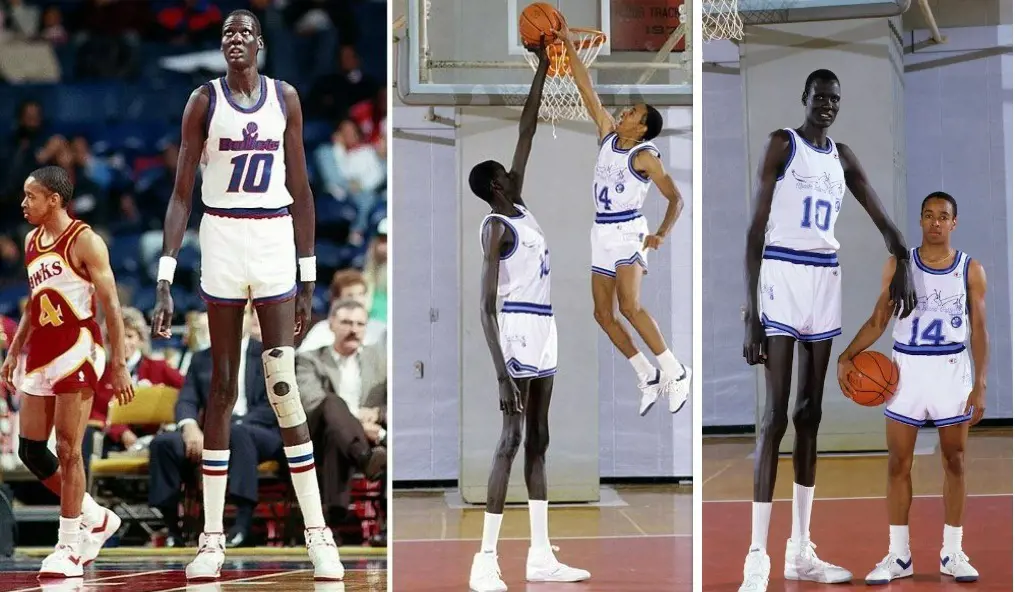
In addition to them, Michael Jordan, Magic Johnson, and Larry Bird are all renowned names in the history of the NBA, with each of them having the best records in their career from the 1980s.
Following are the details regarding the NBA height average based on the playing position from 1981-1990.
Point Guard
The height of an average NBA point guard player increased to 6 feet 2.4 inches in the eighties. With the addition of taller players such as Magic Johnson, the value kept rising every year.
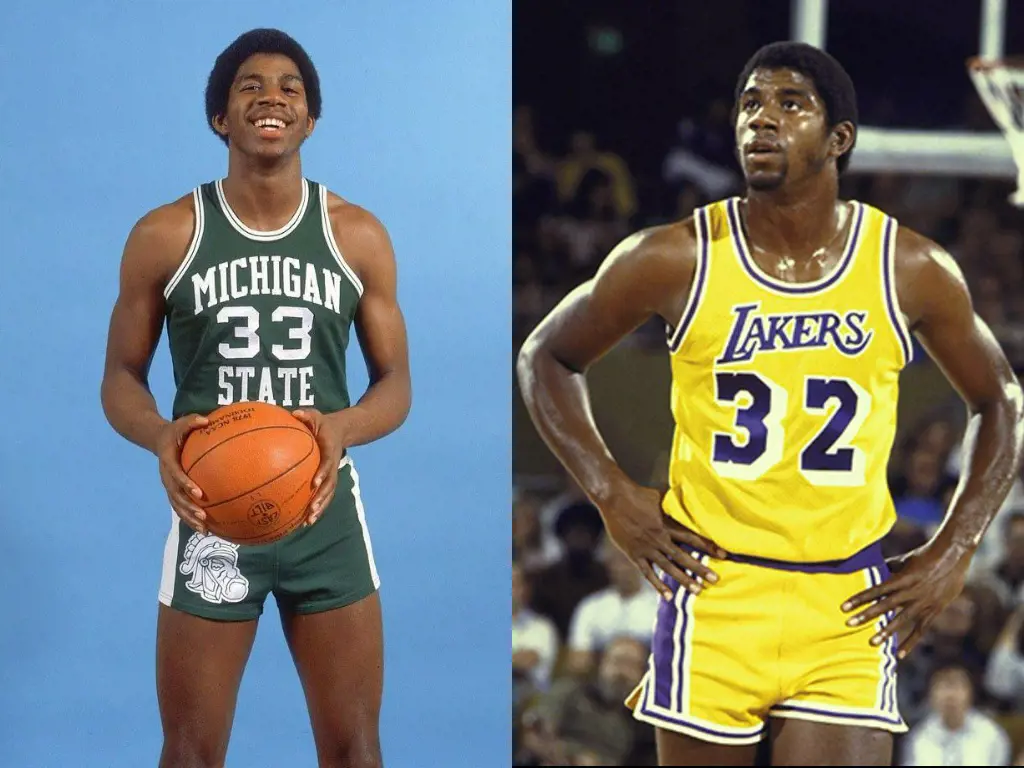
Magic is 6 feet 9 inches tall which is the highest for the point guards in NBA history. After his enrollment, the average kept increasing since the misunderstanding about short players playing point guards became a myth. Two-time NBA champion Isiah Thomas is also among the top players in this position during the 80s.
On the contrary, the shortest point guard ever to play in NBA, Muggsey Bogues is also from the eighties.
Shooting Guard
NBA has recorded an increase of 0.4 inches in average height, reaching 6 feet 4.7 inches in 1990. With the enrollment of tall players, the value is increasing further every decade.
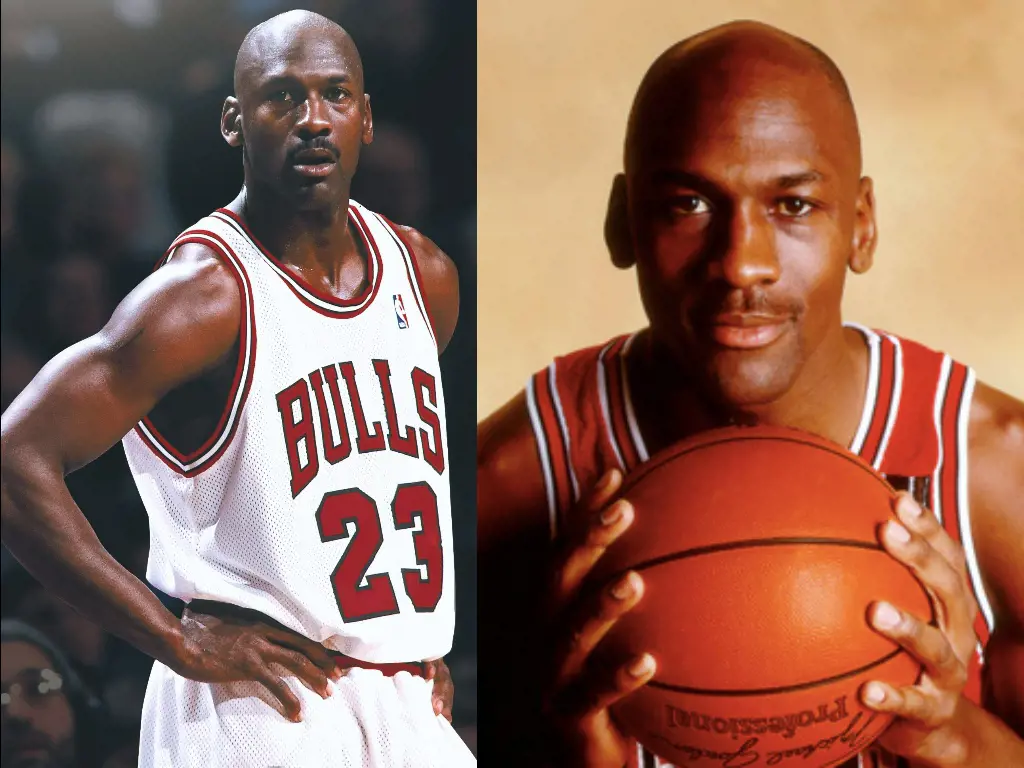
Players such as Michael Jordan have made his name as the greatest basketball player with a height of 6 feet 6 inches. Michael is a basketball icon for youngsters being a 6-time NBA Champion and 11 MVP award winners, including six MVPs during the finals.
George Gervin and Clyde Drexler are other players in this position, among the eighties' top players.
Power Forward
The height of average power forward in the eighties grew to 6 feet 9.2 inches in 1988. At the beginning of this decade, it was 0.6 inches less at 6 feet 8.6 inches in 1981.
Meanwhile, the eighties include tall players like Kevin McHale, who stands at 6 feet 10 inches. Kevin is also a hall of fame inductee and is regarded as one of the greatest power forward of all time.
Charles Barkley and Terry Cummings are also among the most popular ones in NBA, with more than 6 feet 6 inches tall body.
Small Forward
In 1981 the average small forward in NBA was 6 feet 6.9 inches tall. Rising to 6 feet 7.3 in 1988, the average fell by 0.2 inches until 1990.
The tallest player in this position during the eighties was Larry Bird. Larry is also the greatest of the decade, alongside Magic Johnson and Michael Jordan.

Some notable small forward players from the eighties are Alex English, Adrian Dantley, Dominique Wilkins, and Marques Johnson.
Center
The average NBA height of a Center during the eighties increased to 6 feet 11 inches in 1984. The value remained constant for many decades until 2012.
Ever since Manute Bol joined NBA, with his towering height of 7 feet 7 inches, the average ratio has been the maximum for 42 years. Manute is the tallest player ever in the history of NBA.
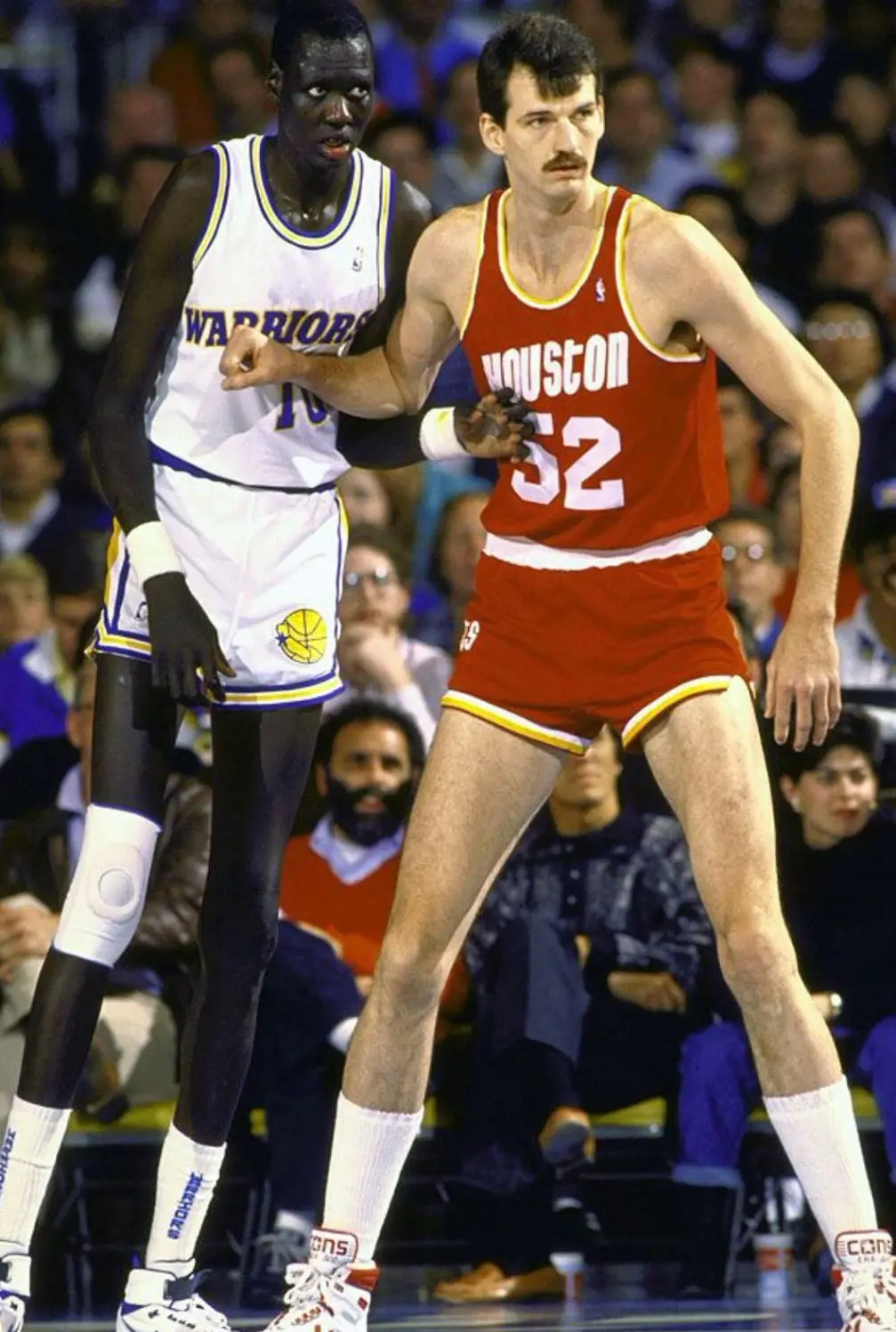
Similarly, many others Center players exceed the 7 feet mark including Chuck Nevitt at 7 feet 5 inches, Randy Breuer at 7 feet 3 inches, and Mark Eaton at 7 feet 4 inches. They are all players who joined NBA in the eighties.
Average NBA Height From 1991-2000
The average height was the highest in 1994 at 6 feet 7.05 inches. Rising from 6 feet 6.95 in 1991, it fell to 6 feet 6.93 at the end of 2000.
Meanwhile, NBA has records of many players taller than 7 feet being drafted in the nineties. The tallest player Gheorghe Muresan is tied with Manute Bol at 7 feet 7 inches.

Following behind him is Shwan Bradley, the second tallest at 7 feet 6 inches, and Zydrunas Ilgauskas is third at 7 feet 3 inches.
Similarly, the shortest player in the nineties is 5 feet 5 inches guard Earl Boykins who is second only to Muggsey Bouges. Additionally, players like Keith Jennings and Greg Grant have done wonders on the court despite having a shorter height of 5 feet 7 inches.
Apart from them, the most popular player from this decade is undoubtedly Kobe Byant who was drafted by Charlotte Hornetts in 1996.
The following account explains the average NBA height in the nineties based on the various playing positions.
Point Guard
Starting at 6 feet 1.7 inches in 1991, the average NBA height decreased in 1996 by 0.6 inches. However, it was the same as the first year when the decade ended in 2000.
6 feet 4 inches players like Gary Payton and Jason Kidd are among the taller players in this position, ranking in the top 20 of the decade.
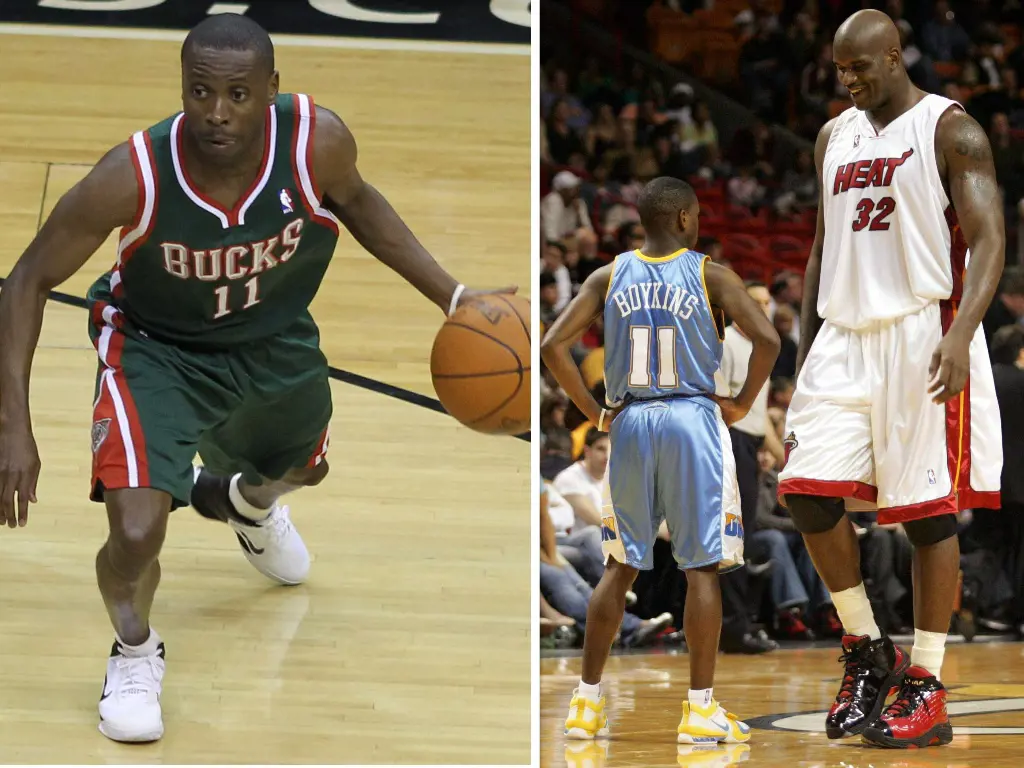
On the other hand, the shortest point guard was Earl Boykins standing at 5 feet 5 inches followed by Keith Jenning and Greg Grant who are 5 feet 7 inches. The variation between them caused the decrease in average height range for point guards.
Shooting Guard
The average height of shooting guard players in the nineties rose to 6 feet 5 inches in 1996. With a variation of 0.3 inches, the value has risen since 1991.

Kobe Byrant was a major personality as the best known shooting guard with his height being 6 feet 6 inches. Meanwhile, Penny Hardaway and Reggie Miller are the tallest players in this position during the nineties, standing at 6 feet 7 inches.
Contrary to that, the shortest shooting guard was DeJuan Wheat standing at 5 feet 11 inches, followed by Allen Iverson and Aaron Brooks at 6 feet.
Power Forward
The difference in the highest and lowest average of power forward is only one inch in the nineties. The average was 6 feet 9.1 inch in 1991 but it reduced to 6 feet 9 inches in 2000.
The shortest power forward in the nineties was Byron Houston who was only 6 feet 5 inches tall. While the tallest in this decade was Tim Duncan standing at 6 feet 11 inches, the player with most popularity in the nineties would be Karl Malone.
Small Forward
The average height of a small forward was highest in 1999, reaching 6 feet 7.4 inches. The NBA index shows that the value has increased by 0.5 inches starting from 6 feet 6.9 inches in 1991.
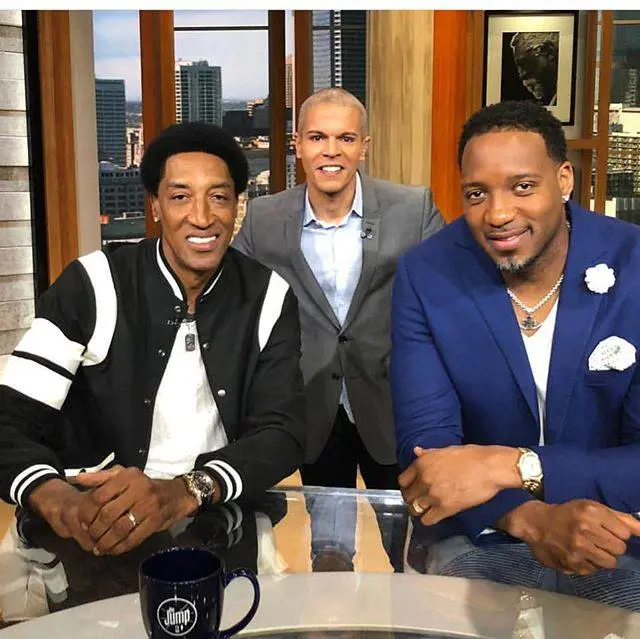
With the tallest player in this position being 6 feet 8 inches, famous players of this height include Tracy McGrady and Scottie Pippen. Similarly, the smallest small forward in the nineties was 6 feet 6 inches tall Vince Carter from Golden State Warriors.
Center
The average height of Center players in NBA remained stable at 6 feet 11 inches in the nineties. Gheorghe Muresan is the tallest player in 90s standing at 7 feet 7 inches.
In addition, the second tallest player Shwan Bradley of 7 feet 6 inches and Zydrunas Ilgauskas of 7 feet 3 inches belonging to the same decade have made the average grow high.
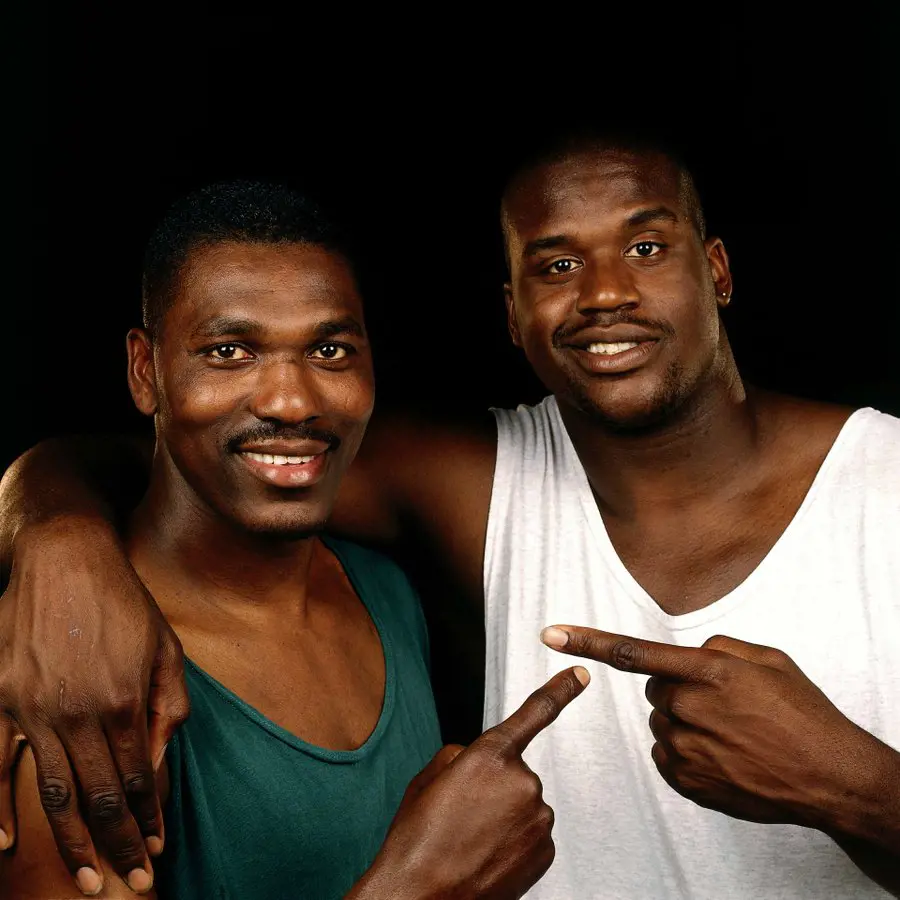
Besides them, legendary players such as Shaq O'Neal and Hakeen Olajuwon are both taller than 7 feet. They rose to their peak in NBA paying their foundations in the nineties after their draft.
Average NBA Height From 2001-2010
The 21st century saw an increase in average NBA height, reaching 6 feet 7.2 inches in 2004. While the lowest was 6 feet 6.93 inches in 2002, it grew higher in the later years.
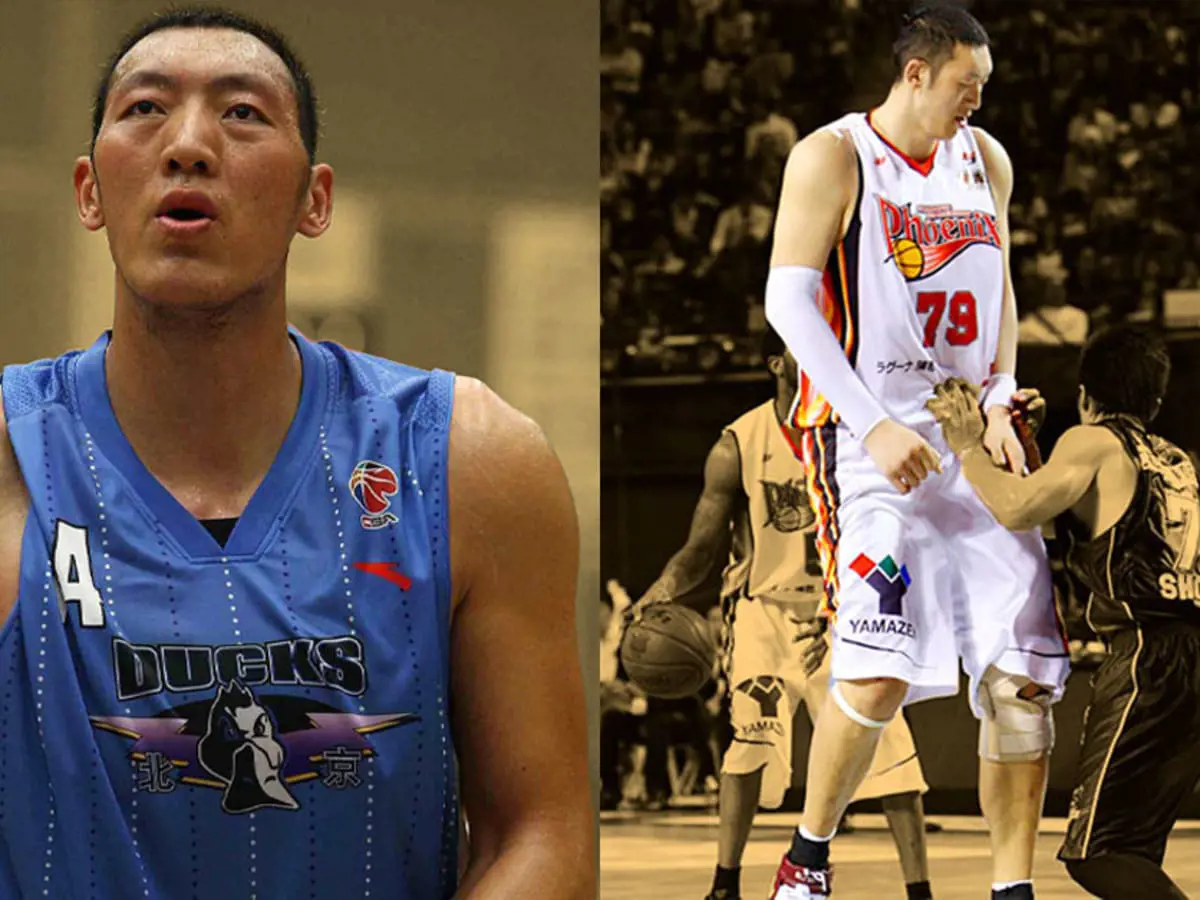
After 2005, Sun Mingming from China was recorded as the world's tallest basketball player measuring a whopping 7 feet 9 inches. However, MingMing was never drafted outside China, so the tallest in NBA is still Manute Bol.
Details Regarding the changes in average height for various positions in the 2000s are as follows.
Point Guard
NBA average height of point guards increased to 6 feet 2 inches in 2009 from 6 feet 1.6 inches in 2002. The change in lowest and highest average in this decade was 0.4 inches.

Baron Davis, Chauncey Billups, and Steve Nash are some taller point guards measuring 6 feet 3 inches. Additionally, Tony Parker and Stephon Marbury were 6 feet 2 inches players popular in the early 2000s.
Shooting Guard
An average shooting guard player was tallest in 2009 with a height of 6 feet 5.3 inches. The lowest was 6 feet 4.8 inches in 2002, which was 0.05 inches lower than the highest.
Eight time NBA all-star Vince Carter is a 6 feet 6 inches tall Shooting guard from the 2000s. Vince was also a slam dunk champion in 2000.
Other top shooting guard players are Jerry Stackhouse, standing at 6 feet 6 inches, and Dwayne Wade, who is 6 feet 4 inches tall.
Power Forward
Power forward players were tallest during 2004, with a 6 feet 9.4 inches average. It is above the shortest average of 6 feet 9 inches in early 2000.
Paul Gasol was the tallest power forward in NBA during that decade, standing at 7 feet 1 inch, followed by Chris Bosh at 6 feet 11 inches.
In addition, 7 feet tall Andrea Bargnani and 6 feet 10 inches tall Lamar Odom are among the famous players in this position.
Small Forward
The average height of a small forward player rose to 6 feet 7.9 inches in 2003 but declined by 0.06 inches in 2007. Starting with the early 2000s, players in this position have become more famous.

Lebron James is one of the most notable players from this decade, counted as one of the greatest in the NBA. Kevin Durant is among the tallest player in this position, at 6 feet 10 inches.
Center
Compared to other positions, the average height of the center remained consistent at 6 feet 11 inches. Yao Ming is the tallest Center player at 7 feet 6 inches, drafted in 2002.
In addition to Yao, 6 feet 10 inches tall Dwight Howard from Orlando Magic is among the top players from this decade.
Average NBA Height From 2011-2023
NBA had a notable flux in the average height in the past ten years since 2013. The highest was 6 feet 7.12 inches in 2011, which decreased to 6 feet 6.74 inches in 2023.
Based on the reports of RunRepeat, 2021 recorded the lowest value in the past 41 years. The archives show that the value was last documented in 1980 and never reached that point until 2021.
Meanwhile, the drop was caused by the regulation update for prioritizing measurement without shoes, which became mandatory in 2020.
When the values increased to 6'6.74" in the 2022 reports of the NBA, it further confirmed the assessment.
The importance of size also depends on the role of players and how fast or skilled they are. The average height based on the five positions are as follows.
Point Guard
Their average size was lowest at 6 feet 1.7 inches in 2012 and highest at 6 feet 2.5 inches in 2019. The tallest point guard drafted during the 2010s is Kyle Anderson.
The 6 feet 9-inch player Kyle has been playing with the Memphis Grizzlies since July 8, 2022. On the contrary, Isiah Thomas is the shortest player in this position in 2023, with a height of 5 feet 9 inches.

In addition, Stephen Curry rose to glory with his 6 feet 2 inches height as a reputable player in this position in the last ten years.
Shooting Guard
The shooting guard recorded the lowest average of 6 feet 4.3 inches in 2021, as per RunRepeat. The highest value was in 2011 at 6 feet 5.1 inches.
Jaylen Brown is a 6 feet 6 inches tall shooting guard based on current records in 2023. In addition, Devin Booker is also a notable player of this decade at 6 feet 5 inches.
Other notable names in this position are Luka Doncic, Jrue Holiday, and DeMar DeRozan.
Power Forward
The power forward average height has decreased since 2020, dropping to 6 feet 8.3 inches in 2021. Previously, it was highest in 2015 at 6 feet 9.2 inches.
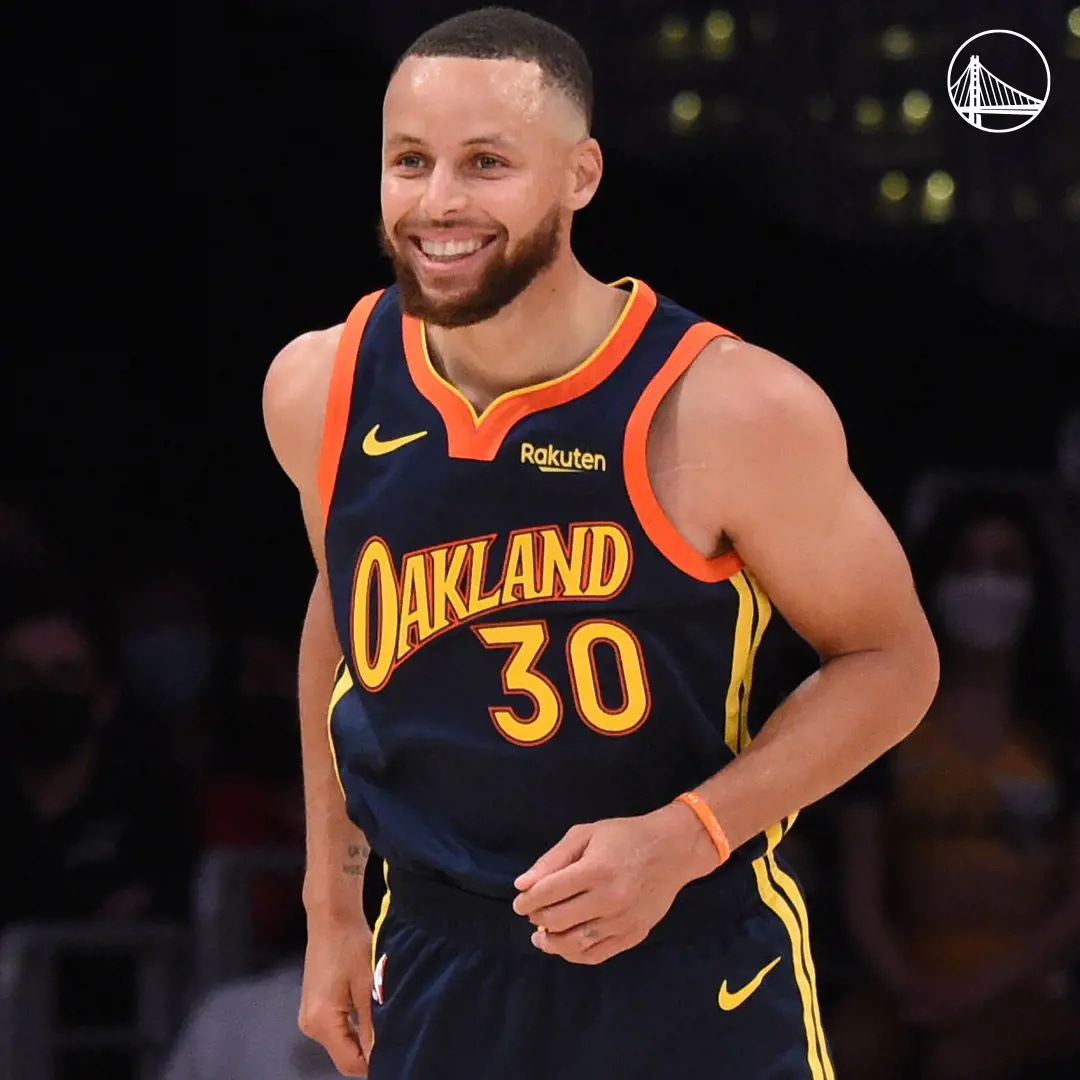
This position includes Kristaps Porzingis as the tallest at 7 feet 3 inches, while the shortest could be Draymond Green and Chuck Hayes at 6 feet 6 inches.
Small Forward
Small Forwards are essential players since they tackle head-to-head with the opponent and manage rebounds. Their average height was lowest at 6 feet 6.6 inches in 2021, with the highest being 6 feet 7.7 inches in 2018.

Being tall is undoubtedly easier for this position considering the tackle. Kawhi Leonard is a famous player in the current decade, along with Khris Middleton and Gordon Hayword. They are of the same height at 6 feet 7 inches tall.
Center
The Center position is always for the tallest man since the lowest average is still 6 feet 10 inches. Being consistent at 6 feet 11 inches for four decades, the average decreased in 2012.
Meanwhile, the tallest centers of the decade are Tacko Fall at 7 feet 6 inches, Sim Bhullar at 7 feet 5 inches, and Boban Marjanović at 7 feet 4 inches.

On the other hand, players such as Chuck Hayes standing at 6 feet 6 inches have increased the difference between the tallest and shortest centers.

